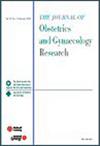Considering its mechanism of action it may be logical to choose letrozole as an initial option for endometrium preparation before vitrified-warmed embryo transfer
Abstract
Aim
To assess the efficacy of letrozole and programmed hormone replacement therapy (HRT) cycles in terms of obstetric outcomes for women undergoing a single vitrified-warmed blastocyst embryo transfer (SVBT).
Methods
This study is a retrospective study conducted in a private IVF (in vitro fertilization) clinic. A total of 324 FET cycles (letrozole group = 183, HRT = 141), consisting of primary infertile patients aged <40 years, were enrolled. The cycle characteristics, pregnancy results, and perinatal parameters were recorded. The primary outcomes of this study are pregnancy and miscarriage rates, live birth rates, whereas hypertensive disease of pregnancy (HDP), intrauterine growth restriction (IUGR) and preterm birth are the secondary outcomes.
Results
Positive β-HCG rates were 53% (97/183) versus 61% (86/141), whereas clinical pregnancy rates were 47% (86/183) versus 51.1% (72/141) for the letrozole and HRT groups, respectively. For clinical miscarriage, the results were 6.5% (12/183) for letrozole versus 15.6% (22/141) for HRT groups, which were statistically significant. For live birth rate (LBR), letrozole was found to be slightly better compared to HRT 40.4% (74/183) versus 35.5% (50/141). Considering the perinatal outcomes, the parameters were comparable between the groups.
Conclusions
In terms of perinatal outcomes and IVF success, letrozole was not found to be inferior to HRT. Letrozole can be utilized as a safe and effective agent, even as a first-line treatment, given the potential benefits offered by its mechanism of action and being a reasonable option for both ovulatory and unovulatory patients.




 求助内容:
求助内容: 应助结果提醒方式:
应助结果提醒方式:


